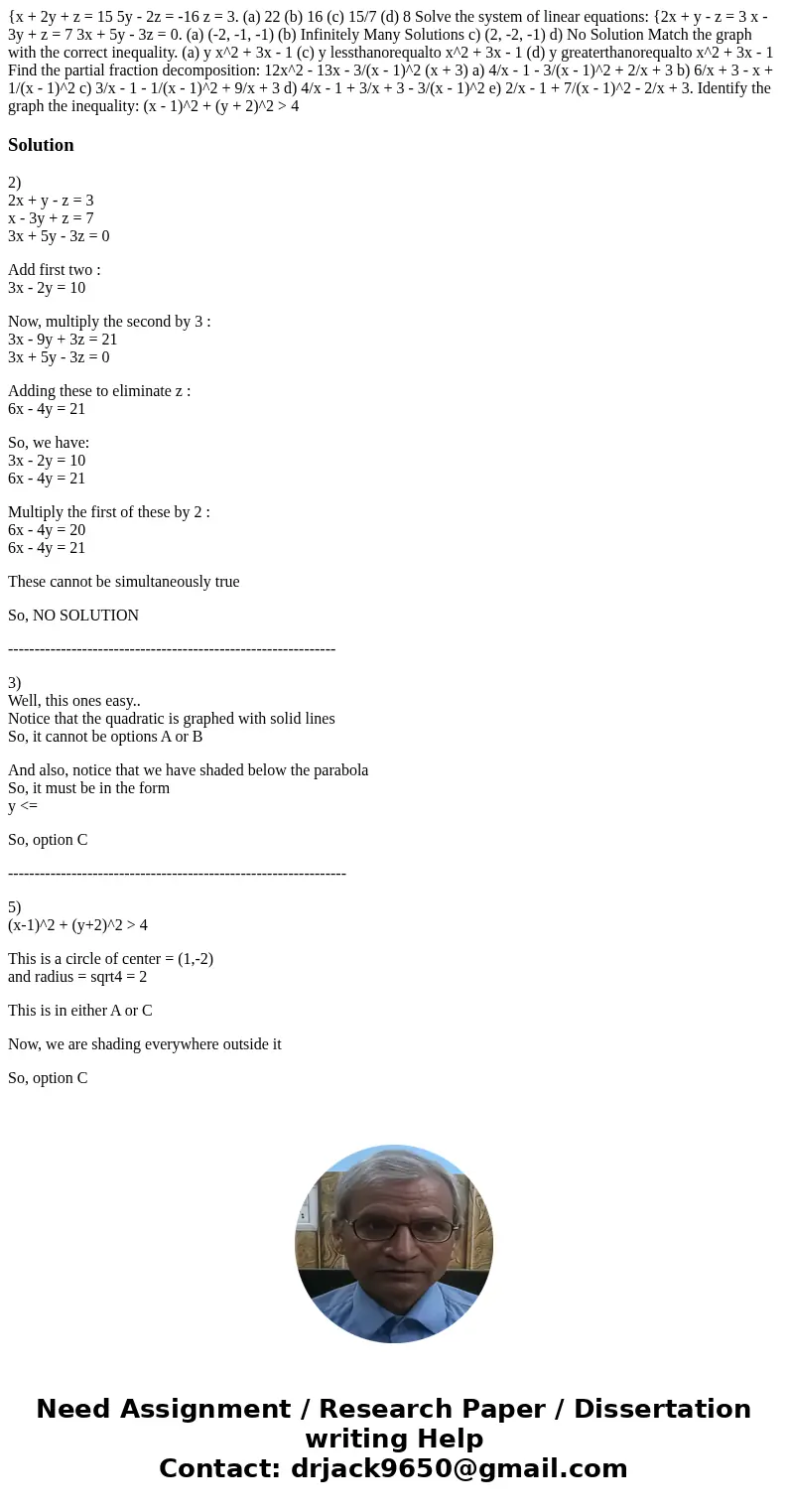x 2y z 15 5y 2z 16 z 3 a 22 b 16 c 157 d 8 Solve the s
Solution
2)
2x + y - z = 3
x - 3y + z = 7
3x + 5y - 3z = 0
Add first two :
3x - 2y = 10
Now, multiply the second by 3 :
3x - 9y + 3z = 21
3x + 5y - 3z = 0
Adding these to eliminate z :
6x - 4y = 21
So, we have:
3x - 2y = 10
6x - 4y = 21
Multiply the first of these by 2 :
6x - 4y = 20
6x - 4y = 21
These cannot be simultaneously true
So, NO SOLUTION
--------------------------------------------------------------
3)
Well, this ones easy..
Notice that the quadratic is graphed with solid lines
So, it cannot be options A or B
And also, notice that we have shaded below the parabola
So, it must be in the form
y <=
So, option C
----------------------------------------------------------------
5)
(x-1)^2 + (y+2)^2 > 4
This is a circle of center = (1,-2)
and radius = sqrt4 = 2
This is in either A or C
Now, we are shading everywhere outside it
So, option C

 Homework Sourse
Homework Sourse